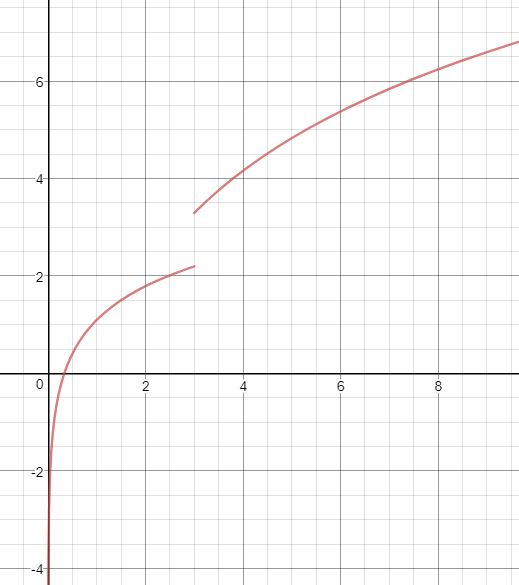#lim_(xrarr3)f(x)# only exists if #lim_(xrarr3^-)f(x)# and #lim_(xrarr3^+)f(x)# exist and are the same (and #lim_(xrarr3)f(x)# would be the same as the other two limits).
first find the one-sided limits:
to find #lim_(xrarr3^-)f(x)#, find f(x) for x-values slightly less than 3. you would use: #f(x)=ln(3x)#, #0< x<=3#, since the numbers fall in that domain.
#f(2.9)=ln(3*2.9)#
#f(2.99)=ln(3*2.99)#
#f(2.999)=ln(3*2.999)#
you can see a pattern, and:
#lim_(xrarr3^-)f(x) = ln(9)#
to find #lim_(xrarr3^+)f(x)#, find f(x) for x-values slightly more than 3. you would use: #f(x)=xln3#, #3< x<=4#, since the numbers fall in that domain.
#f(3.1)=3.1*ln3#
#f(3.01)=3.01*ln3#
#f(3.001)=3.001*ln3#
you can see a pattern, and:
#lim_(xrarr3^+)f(x) = 3*ln(3)#
#ln(9)!=3*ln(3)#, which you can check with the logarithm power rule.
since the left and right sided limits are unequal, #lim_(xrarr3)f(x)# does not exist
in the graph of #f(x)#, there is a jump discontinuity at #x=3#, meaning there is no limit


